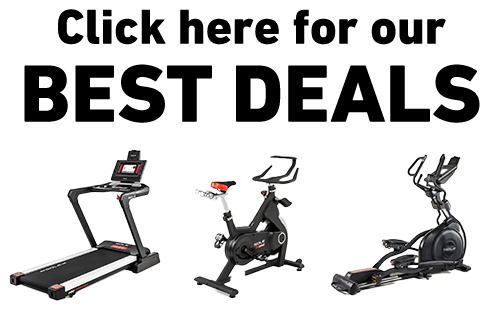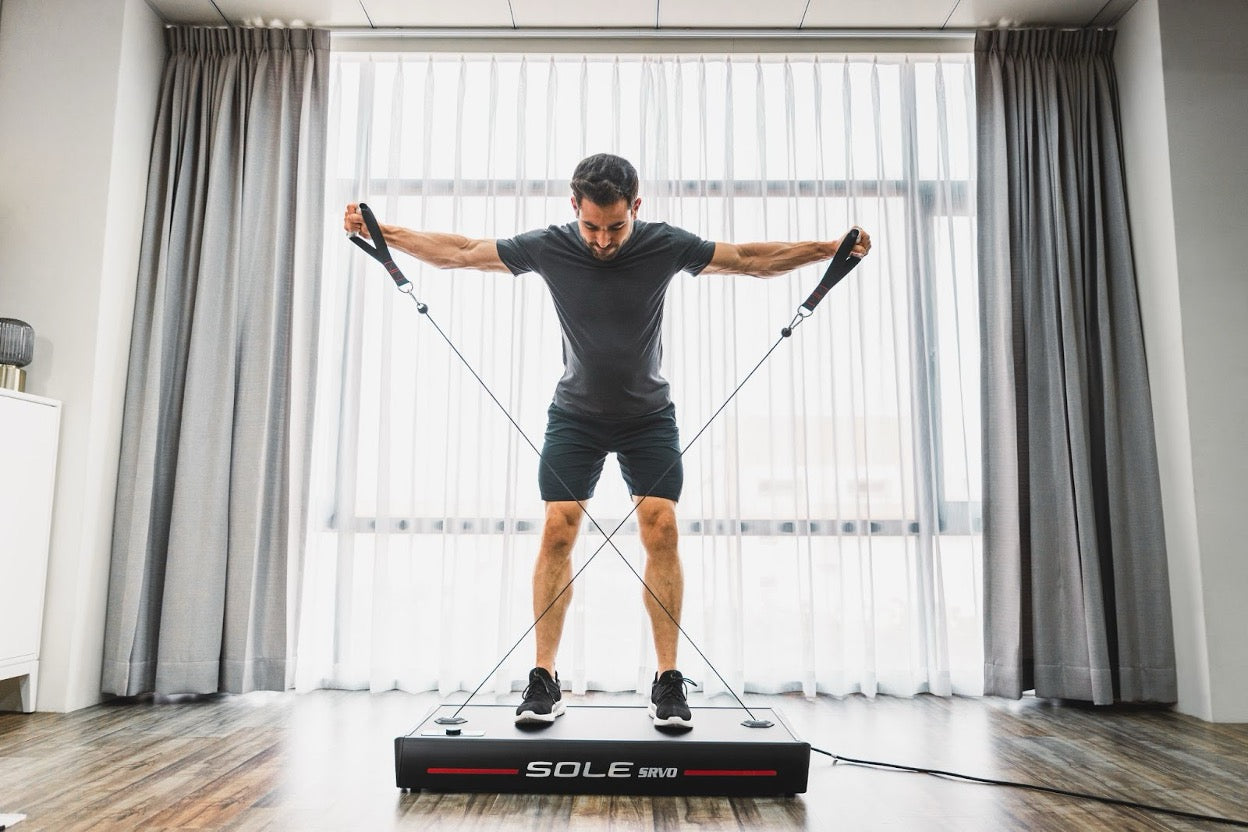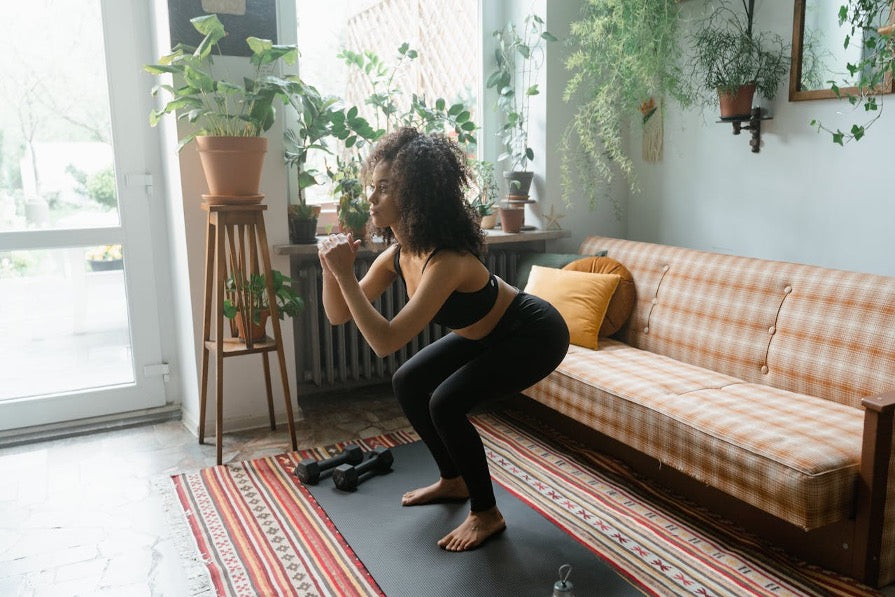Key Takeaways
- For hypertrophy, research favors hitting each muscle group twice weekly, like in PPL, as it maximizes protein synthesis and recovery cycles, provided you stay consistent and apply progressive overload.
- Bro splits focus heavily on one muscle per session, allowing for high volume and mind–muscle connection, but the lower frequency can slow progress for beginners or those missing sessions.
- PPL routines train muscles 2–3 times a week, improving skill, strength, and adaptation speed, while offering flexibility to adjust intensity based on recovery needs.
- Choosing between splits depends on your schedule, training experience, recovery capacity, and preference, as consistency matters more than the split itself.
- SOLE’s SRVO All-in-One Trainer and SW180 Adjustable Dumbbells provide smooth, adjustable resistance for any split, letting you train all major muscle groups at home without clutter or multiple machines.
Understanding Muscle Hypertrophy
Muscle hypertrophy simply means the growth of muscle fibers. This happens when you place your muscles under mechanical tension (lifting), create micro-tears in the fibers, and then allow them to repair and adapt with adequate nutrition and recovery. Over time, this repair process thickens the muscle fibers, making them bigger and stronger.
Several factors influence hypertrophy:
- Training volume ‒ total sets and reps for each muscle.
- Intensity ‒ how hard you train relative to your maximum.
- Frequency ‒ how often you train each muscle per week.
- Recovery ‒ sleep, rest days, and stress management.
Most lifters see the best growth when they hit each muscle around twice per week with sufficient volume. But the way you organize those sessions, whether bro split or PPL, changes how that stimulus is delivered.
|
Revolutionary All-in-One Training System with Game-Changing Motorized Resistance! Choose Your SRVO System:
Why Choose SOLE SRVO: ✓ Revolutionary motorized resistance technology 30-Day Money-Back Guarantee: Love it or return it, no questions asked. |
What is a Bro Split?
A bro split involves training one major muscle group per day, dedicating an entire workout to a single area of the body. It’s one of the most popular approaches among bodybuilders and physique athletes because it allows for intense focus on each muscle.
Shoulders on Wednesday? Time to hit those presses and feel the burn!
A common example looks like this:
Benefits:
- High per-session volume: You can dedicate 15–20 sets to a single muscle group in one workout, which can be ideal for advanced lifters targeting weak points.
- Simple to follow: The structure is straightforward and easy to plan around your favorite exercises.
- Mind–muscle focus: Plenty of time to feel and control each rep without rushing, which can improve muscle activation and form.
- Ample recovery for each muscle: Training each muscle once per week means it gets several days of rest before the next session, which can help if you train with very high intensity.
Drawbacks:
- Lower frequency: Most muscles are trained just once per week, which may not be optimal for growth for many lifters.
- Risk of inconsistency: Missing a day means waiting another full week to train that muscle again, potentially slowing progress.
- Less suited for beginners: The long gap between sessions for each muscle can limit the skill and strength practice newer lifters need.
Push days are all about chest, shoulders, and triceps. Time to flex those presses!
What is PPL (Push, Pull, Legs)?
PPL splits workouts by movement patterns rather than isolating one muscle group per day. This approach organizes training into three categories:
- Push: Chest, Shoulders, Triceps (movements where you push weight away from the body).
- Pull: Back, Biceps (movements where you pull weight toward the body).
- Legs: Quads, Hamstrings, Glutes, Calves (lower-body compound and isolation work).
A full cycle can be done as a 3-day routine (one cycle per week) or repeated as a 6-day routine (two cycles per week), which increases total frequency and training stimulus.
Benefits:
- Higher frequency: Most muscles are trained 2–3 times weekly, which supports consistent muscle protein synthesis and better skill reinforcement.
- Balanced workload: Volume and intensity are spread across the week, reducing the risk of excessive fatigue in a single session.
- Flexible structure: Works well for 3, 4, 5, or 6 training days per week, making it adaptable to different schedules and goals.
- Efficient progression: Frequent exposure to each lift allows for more opportunities to practice technique and add weight over time.
Drawbacks:
- Longer sessions: Especially on leg days or when combining multiple compound lifts in one workout.
- Recovery demands: Less rest time between sessions for the same muscle group, which can be challenging for beginners or lifters training with very high intensity.
- Requires discipline: Skipping a workout can disrupt the flow of the cycle, potentially leading to imbalances if not adjusted.
Leg days are where strength foundations are built, from quads and hamstrings to glutes and calves.
Bro Split vs PPL: How They Really Compare
While both bro splits and PPL routines can build muscle, the way they deliver training stimulus differs in frequency, volume, recovery demands, and overall practicality. Understanding these differences can help you choose the split that best matches your goals and lifestyle.
1. Training Frequency
Bro splits typically train each muscle once per week, meaning there’s a long gap between sessions for the same muscle. PPL, on the other hand, hits each muscle two or more times per week, giving it a slight advantage for most lifters, as higher frequency often supports better hypertrophy and skill retention.
2. Volume & Intensity
With a bro split, you’ll usually perform a high number of sets for one muscle in a single session. While this can provide a strong stimulus, fatigue often sets in, which may reduce the quality of later sets. PPL spreads the total volume across multiple days, keeping more sets fresh and allowing for better performance on each one.
3. Recovery
Bro splits offer 6–7 days of rest before you work the same muscle again, which can be ideal for those who lift very heavy or need more recovery time. PPL shortens this gap to 2–4 days, which keeps protein synthesis increased more frequently and demands solid recovery habits like good sleep, nutrition, and stress management.
4. Progression Potential
Because PPL offers more frequent practice of each lift, it can be easier to progressively overload without burning out in one marathon session. Bro splits can still support progression but often require more careful management of total volume in a single workout.
5. Lifestyle Fit
If you have a consistent 5–6 day per week training schedule, a bro split can work well. But for those with unpredictable schedules, PPL is more forgiving—even with just three sessions a week, you can still train your whole body twice.
Bro Split vs PPL: A Side-by-Side Breakdown
|
Factor |
Bro Split |
PPL (Push, Pull, Legs) |
|
Training Frequency |
Each muscle is trained once per week |
Each muscle is trained 2–3 times per week |
|
Volume & Intensity |
High volume for one muscle in a single session; potential fatigue in later sets |
Volume spread over multiple days; more sets done with higher quality |
|
Recovery |
6–7 days rest before hitting the same muscle again |
2–4 days between sessions for each muscle; requires strong recovery habits |
|
Progression Potential |
Progression is possible but may require managing fatigue in long sessions |
Frequent practice allows gradual, consistent overload |
|
Lifestyle Fit |
Works best for consistent 5–6 day schedules |
Flexible—effective with 3 to 6 sessions per week |
|
Best Suited For |
Advanced lifters focus on specific muscles or weak points |
Most lifters want balanced growth and skill reinforcement |
Which is Better for Muscle Hypertrophy?
PPL generally edges ahead because hitting each muscle twice a week aligns with most studies on optimal frequency for muscle growth. It also keeps training stimulus high without overloading any single workout.
However, this doesn’t make the bro split useless. Many advanced bodybuilders still use it successfully because they can handle high volumes, recover well, and enjoy the structure.
Whichever approach you choose, consistency matters, and that’s much easier when you have access to the right setup. A well-equipped home gym can help you train on your own schedule, avoid missed sessions, and make progress without depending on crowded fitness centers. By combining a smart workout split with reliable training equipment, you can build strength, improve endurance, and stay committed long term.
Boost Your Bro Split or PPL Routine with SOLE Essentials
No matter which workout split you choose, bro split or PPL, having the right equipment can help you train smarter and see better results. SOLE creates premium, space-saving gear designed for home use, so you can work out consistently without waiting for machines or dealing with crowded gyms.
SOLE SRVO All-in-One Trainer
The SRVO All-in-One Trainer replaces an entire gym. Its advanced motorized resistance system delivers smooth, precise weight changes, making progressive overload simple and safe. Built to last with commercial-grade materials, it lets you train every major muscle group without needing multiple pieces of equipment. It’s perfect for both strength days and accessory work.
SW180 Adjustable Dumbbells (80 lbs)
The SW180 Adjustable Dumbbells go from 5 to 80 lbs in seconds, giving you a full rack of weights in a fraction of the space. Great for switching between heavy compound lifts and lighter isolation moves, they work seamlessly for both bro split sessions and PPL training.
SOLE+ App
Every purchase comes with free access to the SOLE+ App, unlocking hundreds of fitness classes and thousands of workout hours. No subscription fees, just a built-in way to stay motivated and save big compared to other brands.
By pairing your chosen training split with SOLE’s high-quality equipment, you can push harder, recover faster, and stay committed, all from the comfort of your own home.
Ready to level up your split? Equip your home gym with SOLE today and make every rep count.
The SW180 Dumbbells are your partner for Bro Split isolation days and PPL’s flow.
Frequently Asked Questions (FAQ)
What is the main difference between a bro split and a PPL split?
A bro split focuses on one muscle group per day, trained once weekly. PPL (Push, Pull, Legs) splits sessions into movement patterns, training each muscle group twice weekly for better frequency and balanced development.
Which split is better for beginners?
Beginners often progress faster with PPL because it allows each muscle to be trained twice a week. This higher frequency supports quicker strength gains, skill learning, and muscle adaptation compared to the once-a-week structure of a bro split.
Can advanced lifters still benefit from a bro split?
Yes. Experienced lifters can use bro splits effectively as they can handle higher volumes per session, recover efficiently, and enjoy the focus of dedicating an entire workout to one muscle group for maximum intensity and detail.
Which split leads to faster muscle growth?
Studies suggest that training each muscle group twice weekly, as in PPL, often supports better hypertrophy. Still, the biggest factor in growth is consistent training, proper recovery, and progressive overload, regardless of the chosen split.
Can I train for both PPL and bro split routines at home?
Yes. SOLE’s SRVO All-in-One Trainer and SW180 Adjustable Dumbbells let you train all major muscle groups with minimal space. They make it easy to switch between PPL sessions, bro split days, or even full-body workouts without multiple machines.




Leave a comment
This site is protected by hCaptcha and the hCaptcha Privacy Policy and Terms of Service apply.